#vippasana meditation
Photo
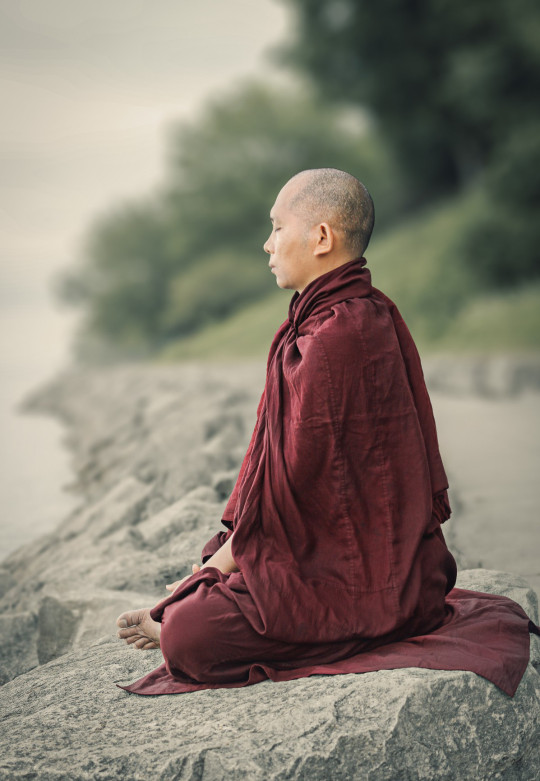
The Quest for Buddhism (116)
Buddhist cosmology
Vippasana meditation
Vipassana meditation (vipassana-bhavana) is a meditation (bhavana Ref1) in which one gains insight into impermanence, suffering and non-self, which are considered truths in Buddhism, by observing nāma (mental action) and rūpa (matter).
Namarupa (Ref) is used in Buddhism to refer to the constituents of a living being: nama is typically considered to refer to the mental component of the person, while rupa refers to the physical.
Vipassana means 'to observe'. It also means 'to see separately' or 'to see things as they are'.
Vipassana emerged around the 6th century, when Mahayana Buddhism was expanding with the trade from India to South-East Asia.

仏教の探求 (116)
仏教の宇宙論
ヴィパッサナー瞑想
ヴィパッサナー瞑想 (巴:ヴィパッサナー・バーヴァナー)は、ナーマ (こころのはたらき) とルーパ (物質) を観察することによって、仏教において真理とされる無常・苦・無我を洞察する瞑想 (バーヴァナー 参照1)である。
ナーマルパ (名色: みょうしき参照) は、仏教において、生物を構成する要素を指す言葉として用いられる。ナーマ(名)は一般に、その人の精神的要素を指し、ルーパ(色)は肉体的要素を指すと考えられている。
ヴィパッサナーは「観察する」を意味する。また「分けて観る」、「物事をあるがままに見る」という意味である。
ヴィパッサナーはインドから東南アジアへの貿易に伴い、大乗仏教 (だいじょうぶっきょう、梵: マハーヤーナ)が拡大していた6世紀頃誕生した。
#vippasana meditation#buddhism#mahayana#nama#rupa#namarupa#buddhist cosmology#mindfulness#philosophy#zen#nature#art
113 notes
·
View notes
Photo

morning meditation #natureappreciation namaslay 💗🌍 q #happeningnow #YVR #sunrise #awareness #holyshit #goodvibes #vippasana #themindchillcollective #BigQi #yogaeveryday #Yogaisawesome #nature #natureza #EastVan @sunrise_and_sunset #getoutstayout #doepicshit #getoutside #exploremore #cloudporn #vancitybuzz #zenzone #Vancouver #sunriselovers #VanCity #letshitgo #yogaoffthemat #namaslay #vancouverisawesome #meditation 1-800-Breathe
#happeningnow#zenzone#vancouver#meditation#sunrise#bigqi#vippasana#doepicshit#yogaisawesome#eastvan#natureappreciation#vancitybuzz#yogaeveryday#awareness#yogaoffthemat#sunriselovers#natureza#getoutstayout#exploremore#yvr#nature#getoutside#themindchillcollective#holyshit#letshitgo#cloudporn#vancity#namaslay#goodvibes#vancouverisawesome
1 note
·
View note
Text
Buddha’s Genius as a Scientist of Mind
In July 2019 I had an opportunity to spend ten days with the discovery of Buddha that led to his enlightenment. It is the meditation technique called Vipasana. The experience changed forever my impression of what Buddha stood for. I held him in high regard for giving the world the middle path following his enlightenment previously but here I learnt that his quest for truth shaped his genius as a scientist of mind.
The ten days I spent at the Vipassana retreat gave me a flavour of his inner pursuits. The meditation path that Buddha propounded, Dhamma, involves four steps (simple, yet they require incredible discipline). The wondrous discovery of Buddha consisting of these four steps led him to nirvana.
Step 1: Develop good character. Good character means you don’t steal, tell lies, indulge in sexual misconduct, kill living beings, or get intoxicated. In the Buddhist tradition, these are the five precepts (called pancha sila).
Step 2: Develop a focused mind. This can be achieved by first focusing on one’s breath, and subsequently by focusing on the sensations that one experiences in and around the nostrils. Throughout the process, it is important to not force a particular breathing pattern but simply observe the natural flow of breath (yatha butah—observing things as they truly are). This will lead to right concentration (called samma samadhi).
Step 3: Be equanimous. Once the mind becomes sensitive to the sensations arising around the nostrils, examine every part of the body for any sensations that are arising moment to moment and be equanimous while remembering that neither pain nor pleasure are permanent as both forms of sensations are transient. This is the Vippasana meditation technique. It leads to the ultimate truth through experienced wisdom (called bhavanamayi panna).
Step 4: For the preceptor who gives this technique, offer gratitude. This gratitude is to be expressed in the form of wishing for the well-being of everyone and everything in the entire universe. It involves a soulful prayer for the welfare of all beings.
Buddha’s genius lies in the discovery that thoughts arising in mind and sensations on body are like two sides of a coin. Observing the mind is the secret to conquering it. However, it is not easy to observe it because mind is an abstract entity. As one example, we can conquer anger by observing anger but it is not easy to observe it. When we try to observe anger we land up observing the object of anger and not anger itself. This leads to more anger within the mind. Buddha’s unique discovery offered a practical approach of observing the mind without actually observing it.
By connecting mind with the sensations arising on the body, and focusing on the sensations on the body with equanimity, Buddha found that one can purify the mind of anger, hared, attachment, craving and others that afflict it. Vippasana in essence is this continuous examination of the sensations arising on the body with equanimity. Practically, this translates to remaining still without reacting if there is a sensation of pain or pleasure or an itch or any other sensation on the physical frame while observing these sensations consciously. Buddha transcended mind using this technique. That transcendence led him to enlightenment. It made him see the atomic structure of the universe and the dissolution of his identification with his physical structure.
While liberation is the grand goal and aspiration, the technique offers an alternative approach to mental health and well-being.
It does not carry the baggage of any sect or narrow religious belief with it but offers something unique and powerful that has an empirical validation in the experience of Buddha himself and the large number of people who have experienced its benefits. For those who practise it regularly, it holds the promise of bringing them closer to being Buddha!
#buddhism#buddha#vipassana#meditation#mind#mindovermatter#dhamma#gratitude#peaceandharmony#wellbeing#retreat
0 notes
Video
youtube
Feel Better - Tip #13
#a course in miracles#acim#how to feel better#get the life you deserve#how to be happier#how to practice meditation#peace of mind#happiness#choose again#labyrinth#vippasana#mindfulness#raise your vibration#raise your frequency#coronavirus tips#lockdown tips#quarantine tips#shelter in place peacefully#how to reduce stress#how to reduce anxiety#how to find happiness
0 notes
Photo

Am so happy for @laurataminau today visiting my mum after #Acroyoga jamming at National theatre garden. #Acroyoga is all about sharing, happiness and trust with love among ourselves. #Acroyoga #Jamming #Vippasana #Meditation #Mindfulness #Family #Visiting #Kampala (at Kampala, Uganda)
0 notes
Photo

Here we go. I'm heading to a 10 day Vippasana Silent Meditation Course today. I am ready to sit with myself in silence and find clarity. This year my intention has been equanimity, to have an even mind and I hope this training will help me along that path. Wish me luck ❤️ Photo and top by @sovifit (at American Bodhi Center)
0 notes
Photo
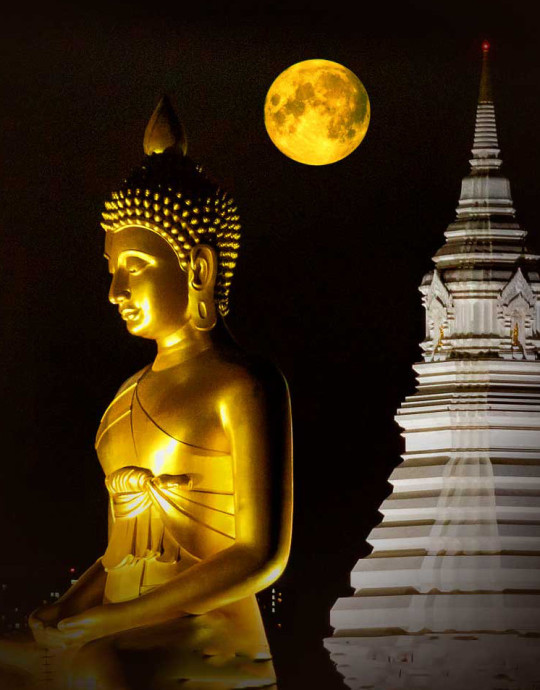
The Quest for Buddhism (117)
Buddhist cosmology
Vippasana meditation - Background
Modern Vipassana meditation is a Theravada Buddhist meditation technique in the Burmese tradition introduced by the monk, Ledi Sayadaw (1846 - 1923) and established by Saya Thetgyi (1873 - 1945) as a meditation technique for lay followers.
The method of skipping the time-consuming practice of samatha meditation (Ref) and practising only vipassana meditation from the beginning was established Saya Thetgyi for lay practitioners who were not ordained, but were living at home, leading a secular life and devoted to Buddhism, and was passed down through Sayagyi U Ba Khin to Satya Narayan Goenka.
It was popularised and organised by them and other lay meditators and ordained practitioners such as Mahasi Sayadaw. It has been introduced to the Theravada Buddhist world, mainly in Myanmar, but also in Sri Lanka and Thailand, as well as in the West.
Vipassana meditation for lay followers has had a practical aspect from the beginning as a technique for recovering from addiction and regaining health, partly due to Goenka's experience of recovering from drug addiction caused by migraine headaches.
Together with Hindu-derived Transcendental Meditation (Ref2), its effects on the body and mind have been studied as a form of complementary and alternative medicine, and it is also used as a healing method to soothe the mind of modern people suffering from various types of stress.
It has been pointed out that “the ability to realise through meditation that body, mind and soul and the universe are both vibrations, and that in this sense the self and the universe are in communication”, appeals to the mentality of those attracted to the anti-rationalist religious movements of recent years, and is a major attraction for people in developed countries.

仏教の探求 (117)
仏教の宇宙論
ヴィパッサナー瞑想 〜 その背景
現代のヴィパッサナー瞑想は、比丘であるレディ・サヤドー (1846年 - 1923年) が紹介し、サヤ・テッ・ジ (1873 - 1945) が在家 (ざいけ:一般信者のこと) のための瞑想法として確立したミャンマー伝統の上座部仏教 (巴: テーラワーダ仏教) の瞑想法である。
時間のかかるサマタ瞑想 (参照) の修行を省略し、最初からヴィパッサナー瞑想だけを行う方法は、出家せず、自宅で世俗的な生活を送りながら仏教に専念する在家修行者のために、サヤ・テッ・ジによって確立され、サヤジ・ウ・バ・キンを経てサティア・ナラヤン・ゴエンカに受け継がれたものである。
彼らやマハーシ・サヤドーらの在家瞑想者や出家によって普及され、組織も作られた。ミャンマーを中心としたスリランカやタイなどの上座部仏教圏だけでなく、欧米にも紹介されている。
在家 (ざいけ:一般信者のこと) のためのヴィパッサナー瞑想は、ゴエンカが偏頭痛による麻薬への依存から立ち直ったという体験を持っていることもあり、依存症から立ち直って健康を取り戻すための技法という実用的な側面も当初から持っていた。ヒンドゥー教由来の超越瞑想(参照2)とともに補完・代替医療の一つとして心身への影響が研究されており、様々なストレスに悩む現代人の心をいやすヒーリング (癒し) としても行われている。
「瞑想を通して心身と宇宙が共に振動であり、その意味で自己と宇宙が通じているとありありと実感できる」という点が、近年の反合理主義的宗教運動に惹かれる人々の心性に訴えかけるところがあり、先進諸国の人々にとっても大きな魅力になっている」と指摘されている。
#vippasana meditation#vippasana#buddhism#buddhist cosmology#zen#mindfulness#theravada Buddhist meditation technique#healing method#art#nature#history#philosophy
117 notes
·
View notes
Photo
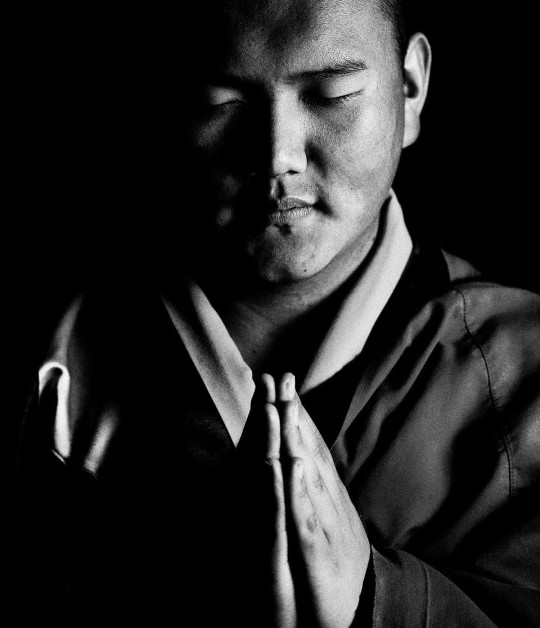
The Quest for Buddhism (113)
Buddhist cosmology
Samatha meditation
Samatha meditation (samathabhāvanā) is a meditation that cultivates concentration by attaching the mind to a specific object. Samatha is a Buddhist term for settling the mind on one object, often is translated as the "tranquility of the mind", "mind-calmness", or “cessation”.
The Pali Canon describes it as one of two qualities of mind which is developed (bhāvanā :Ref) in Buddhist meditation, the other being vipassana (insight).
In Theravada Buddhism there are 40 different meditation objects in total, called Karmasthana or Kammatthana. The meditation on compassion(Ref2), a type of samatha (cessation), is often performed as a preparatory step to Vipassana meditation (vipassanābhāvanā, lit. contemplation). The most commonly used samatha is anapana sati (Skt: anapana-smrti), which is a breath-controlled meditation.

[上記引用: “慈悲のこころは仏教の基本である。「生きとし生けるものが幸せでありますように (巴: サッベ-サッター・バーヴァントゥ・スッキータッター)」というのが、その基本となる精神である。”]
仏教の探求 (113)
仏教の宇宙論
サマタ瞑想
サマタ瞑想 (サマタめいそう、巴: サマタ・バーヴァナー)は、心を特定の対象に結びつけて集中力を養う瞑想である。サマタ(梵: シャマタ)とは、仏教用語で、ひとつの対象に心を落ち着かせることであり、しばしば「心の静寂」「心の落ち着き」または「止 (し)」と訳される。
パーリ仏典では、仏教の瞑想において「心の発達 (巴:バーヴァナー参照)」の2つの性質のうちの1つであり、もう1つはヴィパッサナー(観・洞察)であると説明されている。
上座部仏教では業処 (ごうしょ、巴:カンマッタ-ナ、梵: カルマスターナ)と呼ばれる瞑想対象が40種類ある。ヴィパッサナー瞑想(ヴィパッサナーめいそう、巴:ヴィパッサナー・バーヴァナー、観行の意)の準備段階としてサマタ(止) の一種である慈悲の瞑想(参照2)が行なわれることが多い。最も一般によく使われるサマタは呼吸を対照する安那般那念 (あんなはんなねん、巴: アーナーパーナ・サティ、梵: アーナーパーナ・スリムティ)である。
#samatha meditation#vippasana meditation#buddhist meditation#buddhism#buddhist cosmology#meditation on compassion#compassion#insights#tranquility of the mind#mind-calmness#cessation#anapana sati#philosophy#nature#art#buddha
95 notes
·
View notes
Photo

The Quest for Buddhism (120)
Buddhist cosmology
Samatha-vippasana – Buddhist yoga
Samatha-vipassana is the main form of Buddhist meditation and yogic practice, yoga. In a broad sense, it is part of Zen.
Buddhist yoga practice is samatha-vippasana, in which samatha (stillness: Ref) and vippasana (insight: Ref2) take place simultaneously. The emphasis on observation as well as cessation is characteristic of Buddhist meditation methods. Cessation and contemplation are often compared to two wheels, which are inseparable. The diverse development of this technique of prayer and meditation, incorporating yogic contemplation (meditation), is a characteristic of Buddhism.
Buddhist yoga encompasses a variety of methods which aim to develop the 37 aids to awakening (Ref3). Its ultimate goal is bodhi (awakening) or nirvana (cessation), traditionally seen as the permanent end of suffering (dukkha) and rebirth. Buddhist texts use a number of terms for spiritual praxis in addition to yoga, such as bhavana ("development": Ref4) and jhana (dhyana: Ref5).
In early Buddhism, yoga practices included:
the rupa dhyanas (four meditations or mental absorptions: Ref6),
the four satipatthanas (foundations or establishments of mindfulness),
anapanasati (mindfulness of breath: Ref7),
the four immeasurable minds (supranormal states of mind),
the brahmaviharas (divine abodes: Ref8).
Anussati (contemplations, recollections)
*Note: the four satipatthanas are the most central and most important contemplation for attaining enlightenment since the time of the Buddha's early Buddhism, and the core contemplative practice of the main Buddhist meditation of samatha-vipassana.
These meditations were seen as supported by the other elements of the Noble Eightfold Path (Ref9), such as ethics, right exertion, sense restraint and right view. Two mental qualities are said to be indispensable for yoga practice in Buddhism: samatha (calm, stability) and vipassanā (insight, clear seeing). Samatha is a stable, relaxed mind, associated with samadhi (mental unification, focus) and dhyana (a state of meditative absorption). Vipassana is insight or penetrative understanding into the true nature of phenomena, also defined as "seeing things as they truly are" (yathābhūtaṃ darśanam). A unique feature of classical Buddhism is its understanding of all phenomena (dhamma) as being empty of a self (Pali: anatta Skt: anatman, literally "non-self").
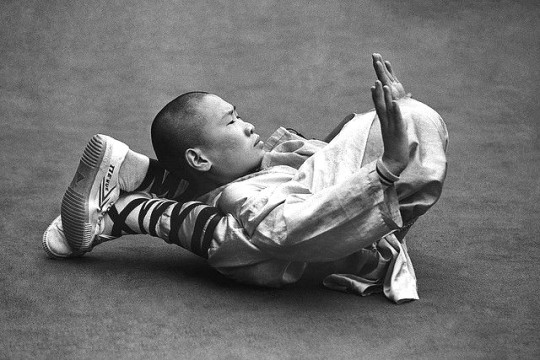
仏教の探求 (120)
仏教の宇宙論
止観 〜 仏教ヨガ
止観 (しかん、梵: サマタ・ヴィパッサナー) とは、仏教の瞑想の主なものであり、ヨガ行である。広い意味で禅の一部に組み込まれている。
仏教のヨガ行は、サマタ (止: 参照) とヴィパッサナー (観: 参照2) が同時に行われる止観である。サマタ (止) だけでなくヴィパッサナー (観) も重視するところに、仏教の瞑想法の特徴がある。止観は、しばしば2つの車輪に例えられ、不離の関係にある。ヨーガ観法 (瞑想法) を取り入れて、この祈りと瞑想の技術が多様に発展したことが、仏教の特徴であるといえる。
仏教のヨガは、悟りを開くための37の修行項目(参照3)を開発することを目的とした様々な方法が組み込まれている。その究極の目標は菩提 (覚醒) または涅槃 (止)で、伝統的には苦 (梵・巴: ドゥッカ) と転生の永久的な終わりと見なされている。仏典では、ヨガ行に加えて、瞑想の発達 (バーヴァナー: 参照4) や禅定 (ぜんじょう、梵: デイヤーナ、巴: ジャーナ: 参照5) など、精神修養のための用語がいくつか使われている。
初期仏教では、ヨガの修行には以下のようなものがあった:
四禅 (しぜん、梵: ルーパデイヤーナ、四つの瞑想または精神的吸収: 参照6)
四念処 (しねんじょ、巴: チャッターロー・サティパッターナー、マインドフルネスの基礎となるもの)
安那般那念 (あんなはんなねん、巴:アーナーパーナ・サティ、呼吸を意識すること: 参照7)
四無量心 (しむりょうしん、巴: アッパマナー、心の超常的な状態: 参照8)
四梵住 (しぼんじゅう、梵・巴:ブラフマーヴィハーラ、神聖な住まい)
アヌサティ(観想、想起)
*注)四念処 (しねんじょ、巴: チャッターロー・サティパッターナー)とは、釈迦の初期仏教の時代から、悟りを得るための最も中心的で最も重要な観想であり、仏教の主要な瞑想である止観の中核をなす観想法である。
これらの瞑想は、倫理、正しい努力、感覚の抑制、正しい見方など、八正道(参照9)の他の要素によって支えられていると考えられていた。仏教では、ヨガの練習に欠かせない2つの精神的資質があると言われている。それがサマタ (静寂、安定) とヴィパッサナー (洞察、明察) である。サマタ (止) とは、安定したリラックスした心のことで、サマディ (三昧: 精神統一、集中) やディヤーナ (禅定: 瞑想的吸収の状態) に関連している。ヴィパッサナー(観) は現象の本質に対する洞察や浸透的な理解であり、「物事を本当にあるがままに見る」とも定義されている。古典仏教の特徴は、すべての現象(ダンマ)を無我 (むが、巴: アナッター、梵: アナートマン) のものと理解することである。
#buddhist yoga#samatha-vippasana#buddist meditation#buddhism#buddha#awakening#meditation#mindfulness#zen#wisdom#philosophy#shaolin#yoga#nature#art#bodhi#nirvana#maitreya
152 notes
·
View notes
Photo

The Quest for Buddhism (119)
Buddhist cosmology
Samatha and Vipassana meditations - the relationship
Gautama Buddha said to have identified two paramount mental qualities that arise from wholesome meditative practice are samatha (stillness: Ref) and vippasana (insight: Ref2).
It is the work of the still mind (samatha) that becomes wisdom (vipassana). Thus, it is to observe things correctly in accordance with the truth.
Thus, "stopping (samatha)" refers to meditation (jhana: Ref3), and "seeing (vipassana)" refers to wisdom (panna). Buddha realised that the root cause of human suffering is lack of clarity, and he allegedly attained enlightenment through contemplation of the twelve causal factors (Ref4) in order and in reverse order.
In the Pali canon, the Buddha never mentions independent samatha and vipassana meditation practices; instead, samatha and vipassana are two "qualities of mind" to be developed through meditation (jhana). When the Pali suttas depict the Buddha telling his disciples to go meditate, they never quote him as saying 'go do vipassana,' but always 'go do jhana.' And they never equate the word "vipassana" with any mindfulness techniques.
[How to]
Practice begins with the preparatory stage, the practice of sila, morality, giving up worldly thoughts and desires. Morality is a quintessential element of Buddhist practice, and is also emphasised by the first generation of post-war western teachers. Yet, it is noted that in the contemporary mindfulness movement, morality as an element of practice has been mostly discarded, 'mystifying' the origins of mindfulness.
The practitioner then engages in anapanasati (Ref5), mindfulness of breathing, which is described in the Satipatthana Sutta as going into the forest and sitting beneath a tree and then to simply watch the breath. If the breath is long, to notice that the breath is long, if the breath is short, to notice that the breath is short.
The practitioner also becomes aware of the perpetual changes involved in breathing, and the arising and passing away of mindfulness. This noticing is accompanied by reflections on causation and other Buddhist teachings, leading to insight into suffering (dukkha), non-self (anatta), and impermanence (anicca). When the three characteristics have been comprehended, reflection subdues, and the process of noticing accelerates, noting phenomena in general, without necessarily naming them.
Some sects point out that the practice of both samatha and vipassana together allows one to achieve various mental powers and higher knowledge (Skt: abhijna, Ref6), including the attainment of Nirvana, whereas the practice of vipassana alone allows for the achievement of Nirvana, but no other mental powers or knowledges.

仏教の探求 (119)
仏教の宇宙論
サマタ瞑想とヴィパッサナー瞑想 〜 その関係性
ゴータマ・ブッダは、健全な瞑想の実践から生まれる最も重要な心の資質として、サマタ (静止: 参照) とヴィッパサナー (洞察力: 参照2) の2つを特定したと言われている。
それは、不動の心(サマタ)が、智慧(ヴィパッサナ-)のはたらきとなって、事物を真理に即して正しく観察することである。
このように、サマタ(止)とは禅定 (ディヤーナ: 参照3) に当たり、ヴィパッサナー(観)とは智慧に相当している。ブッダはサマタ(止)により、人間の苦の根本原因が無明であることを自覚し、十二因縁(参照4)を順逆に観想するヴィパッサナー(観)によって無明を脱したとされる。
パーリ仏典では、ブッダは独立したサマタとヴィパッサナー瞑想の修行について言及せず、代わりにサマタとヴィパッサナーは瞑想を通して開発すべき二つの「心の資質」であると述べている。ブッダが弟子たちに瞑想をするように言うときには、「ヴィパッサナーをしなさい」とは言わず、常に「ジャーナをしなさい」と言っていた。また、「ヴィパッサナー」という言葉をマインドフルネスのテクニックと同一視することはない。
[修行方法]
修行は、まず準備段階として、世俗的な考えや欲望を捨て、シーラ (道徳) を実践することから始まる。道徳は仏教の修行の真髄をなす要素であり、それは戦後の西洋の第一世代の教師たちによっても強調されている。しかし、現代のマインドフルネス運動では、修行の要素としての道徳はほとんど捨て去られ、マインドフルネスの起源を「神秘化」していると指摘されている。
実践者は次に安那般那念 (あんなはんなねん、巴:アーナーパーナ・サティ、梵:アーナーパーナ・スムリティ 参照5)、呼吸のマインドフルネスに取り組み、森に行き、木の下に座り、そして単に呼吸を見ることとして念処経 (ねんじょきょう、巴:サティパッターナ・スッタ)で記述されている。呼吸が長ければ長いと感じ、短ければ短いと感じる。
修行者はまた、呼吸に伴う絶え間ない変化、そしてマインドフルネスの発生と消滅に気づくようになる。この気づきは、因果関係や他の仏教の教えについての考察を伴い、苦 (梵・巴: ドゥッカ)、無我 (むが、巴: アナッター、梵: アナートマン)、無常 (むじょう、巴: アニッチャ、梵: アニトヤ) を洞察することにつながる。この3つの性質が理解できたとき、反省は収まり、気づきのプロセスが加速され、必ずしも特定せずとも全般的な現象に注目するようになる。
宗派によっては、サマタとヴィパッサナーを一緒に修行すると、涅槃 (ねはん、梵: ニルヴァーナ) の達成を含むさまざまな精神力と智慧 (巴:アビニャー 参照6) が得られるが、ヴィパッサナーのみの修行では、涅槃の達成はできるが他の精神力と知識は得られないと指摘されている。
#buddhism#buddhist cosmology#samatha#vippasana#meditation#jhana#buddhist meditation#cessation#insights#mindfulness#zen#philosophy#nature#art
134 notes
·
View notes
Photo
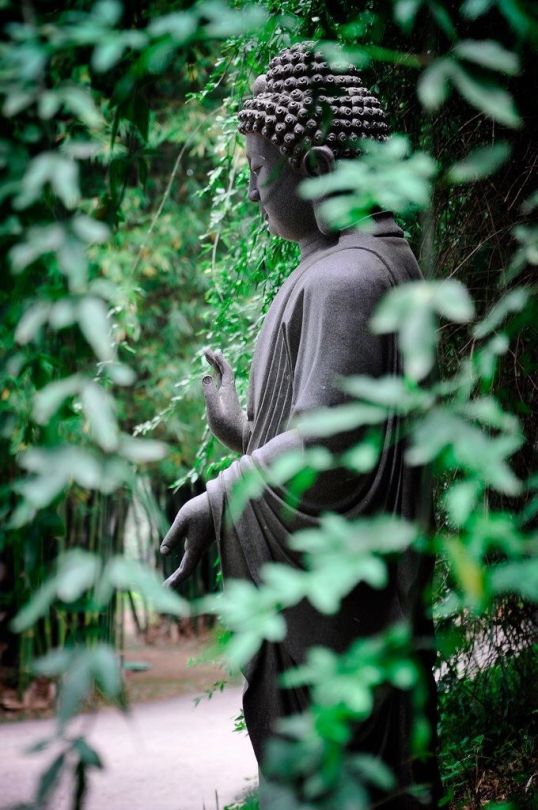
The Quest for Buddhism (102)
Buddhist cosmology
Bhavana – Training of the mind, mastery of the 4 rupa-jhana (Ref1)
Bhavana literally means "development" or "cultivating" or "producing", in the sense of "calling into existence" in Pali and Sanskrit. It is an important concept in Buddhism as a practice (Patipatti).
The word bhavana is sometimes translated as 'meditation' so that, for example, metta-bhavana may be translated as 'the meditation on loving-kindness'. Meditation is properly called dhyana (Pali: jhana Ref), as practiced in samadhi, the 8th limb of the eightfold path (Ref2).
In the Pali canon, bhavana appears in the form of idioms in the context of long-term personal efforts for the development of specific abilities, such as mind and compassion. For example, in the Pali canon and the composite scriptures, the following terms can be found:
citta-bhāvanā, translated as "development of mind" or "development of consciousness."
kāya-bhāvanā, translated as "development of body."
mettā-bhāvanā, translated as the "cultivation" or "development of benevolence."
paññā-bhāvanā, translated as "development of wisdom" or "development of understanding."
samādhi-bhāvanā, translated as "development of concentration."
In addition, in the Canon, the development of samatha meditation - vipassana meditation (bhavana) is recommended. Subsequently, Theravada teachers have made use of the following compounds:
samatha-bhāvanā, meaning the development of tranquility.
vipassanā-bhāvanā, meaning the development of insight.

仏教の探求 (102)
仏教の宇宙論
心の訓練 (バーヴァナー) 〜 四禅 (参照1) の修得
バーヴァナーとは、パーリ語またサンスクリット語で、発達、育成、生産を意味する語句であり、生活における活動という意味合いである。仏教においては実践 (パティパッティ)として重要な概念である。
バーヴァナーという言葉は「瞑想」と訳されることもあり、例えばメッタ・バーヴァナーは「慈愛の瞑想」と訳されることがある。瞑想は、正しくは禅定 (梵: デイヤーナ、巴: ジャーナ 参照) と呼ばれ、八正道(参照2)の8番目の肢(え)である三昧 (さんまい、梵: サマーディ)で実践されるものである。
パーリ仏典では、「バーヴァナー」は、心・慈など特定の能力を開発するための長期的な個人の努力という文脈で、慣用句の形で登場する。例えば、『パーリ語大全』や『複合経典』には、次のような用語がある:
シッタ・バーヴァナー:「心の発達」、「意思の発達」と訳される。
カーヤ・バーヴァナー:「身体の発達」と訳される。
メッタ・バーヴァナー:「慈を修めること」、「慈の発達」と訳される。
パンニャ・バーヴァナー:「知恵の発達」、「理解の発達」と訳される。
サマーディ・バーヴァナー:「集中力の発達」と訳される。
また経典においては、サマタ瞑想-ヴィパッサナー瞑想の発達(バーヴァナー)が推奨されている。そのため上座部仏教のテキストでは以下の語句が使われてる:
サマタ・バーヴァナー: 静けさの発達を意味する。
ヴィパッサナー・バーヴァナー: 洞察力の発達を意味する。
#bhavana#the 4 rupa-jhana#meditations#mindfulness#buddhism#nature#pali cannon#patipatti#buddhist practice#smatha#vippasana#philosophy#buddhist cosmology#art
134 notes
·
View notes
Photo

Dance plus ➕ yoga and acroyoga what do you think the out come. #inspiremeafricainitiative #NyegeNyegeFestival2017 loaded #Dancer #danceforpositivity #Vippasana #meditation #Personaltrainer #peacebuilder #workouts #fitnessmotivation #2017Changer #Healthy #Bboying #BboySkaterGeorge (at O Café Gulu)
#inspiremeafricainitiative#workouts#nyegenyegefestival2017#fitnessmotivation#bboyskatergeorge#dancer#meditation#2017changer#danceforpositivity#bboying#vippasana#personaltrainer#peacebuilder#healthy
0 notes
Photo

Flash back at Lake kivu in #Rwanda coz meditating near water is something so nice which calms our minds so nice. #meditation is not religious thing my friends but it's adviced that in our daily lives we need to have that quite moment atleast even 10 minutes. #meditation #Vippasana #LakeKivu #Rwanda #YogaLife #Tour2017 #CommunityYoga #inspiremeafricainitiative #bboyskatergeorge
#communityyoga#vippasana#lakekivu#rwanda#yogalife#inspiremeafricainitiative#tour2017#meditation#bboyskatergeorge
0 notes
Video
Someone's UBER excited for Sun's MindChill Workshop 'Santa's Gone .... Put Your Headbands On!' [Cam grooving a sweet Charlie Brown dance 🎉]. Come join @magneticfield & @wesleyoga this Sun 1-4pm @sempervivayoga Sea Studio as we explore: The Power of Intention • Crystalizing Meditation • Energetic Momentum • Purging Pranayama • A 90min 'Full Power Fusion Flow' + a whole heck of alotta FUN 🤘🏻Deets & Registration in Profile Link ⚡️#neon #Shaka #relaxintoflow #Planetmindchill #TaoistYoga #BIGQi #celebratethesparkle #semperviva #lifeoutsidethebox #individuality #goodvibes #vippasana #WuWei #yogaeveryday #QiGongisawesome #vancitybuzz #VancouverYoga #doepicshit #vancitybuzz #Vancouver #letshitgo #qi #mindchill #prana #lifeforce #instayoga #mindchill #yogaworkshop #headbands #wristbands #YVR ##604 1-800-Breathe (at Semperviva Sea Studio - Granville Island)
#604#individuality#planetmindchill#neon#taoistyoga#vancouveryoga#prana#bigqi#vippasana#doepicshit#yvr#vancitybuzz#shaka#instayoga#yogaeveryday#wuwei#celebratethesparkle#headbands#qigongisawesome#lifeoutsidethebox#lifeforce#relaxintoflow#yogaworkshop#letshitgo#semperviva#goodvibes#qi#vancouver#mindchill#wristbands
2 notes
·
View notes
Photo

Always take a moment and sit down for awhile so that you get fresh mind to start up your day. Fash back #SaveAmother #Vippasana meditation #Gulu #CommunityYoga #Youthyoga #positivevibes #inspiremeafricainitiative #Iamyoga #Personaltrainer #fitness #workouts #Healthy #BboySkaterGeorge (at Kampala, Uganda)
#personaltrainer#saveamother#inspiremeafricainitiative#workouts#fitness#healthy#bboyskatergeorge#vippasana#youthyoga#communityyoga#iamyoga#gulu#positivevibes
0 notes